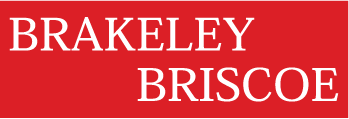Major Donor Transformations
The Brakeley Briscoe Team
Moving from a big list of donors making small gifts to a robust major gifts program is a complicated challenge. In seeking a major gift, you are asking your annual or special appeal donors to make significant changes in their attitudes toward your organization. Most annual gifts are made from the “checkbook.” A donor looks at the household budget and decides to make small annual, monthly or one time contributions. Some of these donors have significant capacity in that checkbook. Many have even greater capacity in liquid and illiquid assets of some sort. How do you get your organization out of a high capacity donor ’s little gifts column and into the big or at least bigger gifts column?
Patience and Persistence
First, it takes time, patience and persistence. One nonprofit board member commented recently about a major gift prospect, “he has the interest, he has been making small gifts to us, we know he has the capacity, and he is a friend of mine. I am surprised that it has taken us more than 18 months to get him even to consider a gift of $25,000.”
High-Touch
It also takes “high touch.” In a fundraising study interview for a performing arts organization, wealthy subscribers said their giving had gone down because they had come to miss the opportunities to engage with the artistic staff and other major donors. Years of funding and staff cuts in the donor cultivation and stewardship programs had taken their toll. Of course, when the gifts get smaller, so do the perks, but these people saw it the other way around.
Beyond Transactional Giving
Often it takes a transition from “transactional” solicitations to conversations about donor investment and impact on the organization and its beneficiaries. A policy study organization had a system of advisory boards where the members were expected to commit $30,000 annually. They encountered serious challenges getting the corporate members, especially, to increase giving beyond this threshold. These donors had bought their place at the table and did not see additional value to be gained with greater giving.
Direct Response to Major Gifts
Many organizations have large lists of annual donors that have been acquired and maintained through direct marketing methods—mail, phone or web. There is a certain amount of upgrading possible through focused direct marketing approaches. But for most, the time comes, as one of Brakeley’s most famous consultants, Sy Seymour, once said, “to sit down and apply yourself personally.” Direct engagement with donors, where you give them the bigger picture about the aims and abilities of your organization, is the most important thing you can do to move these donors into the major gift category.
Turning a supporter into a major donor is staff and time intensive. It also requires creativity. High capacity donors are besieged with opportunities to give and give more, as well as with opportunities to meet with major gift officers or come to cultivation events. In almost every case where a prospect becomes a major donor, that high touch relationship is the foundation of the giving. So, difficult as it may be, each major donor prospect requires a strategy aimed at engaging them personally in the life of your organization. Then you can transform the conversation from “give because our audiences, clients, patients or students (or you) will benefit.” It becomes “join us in our work.”
